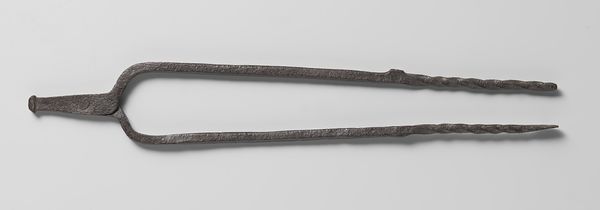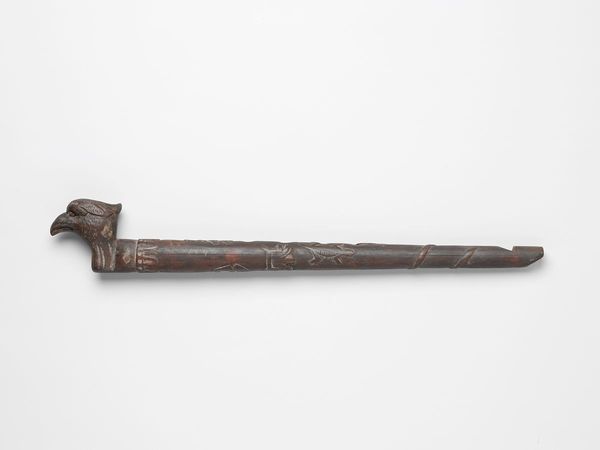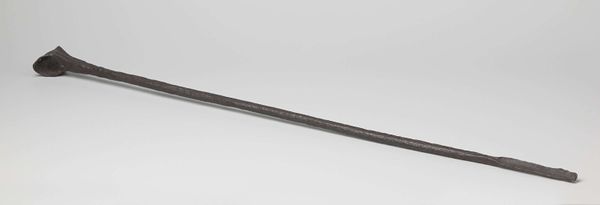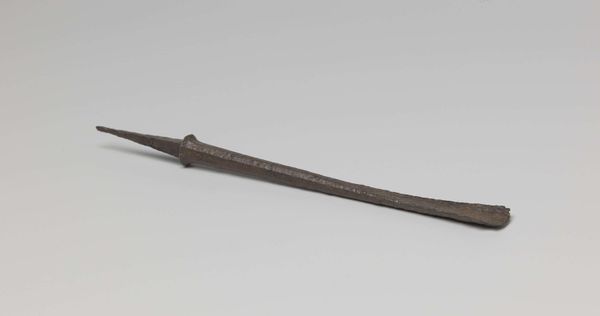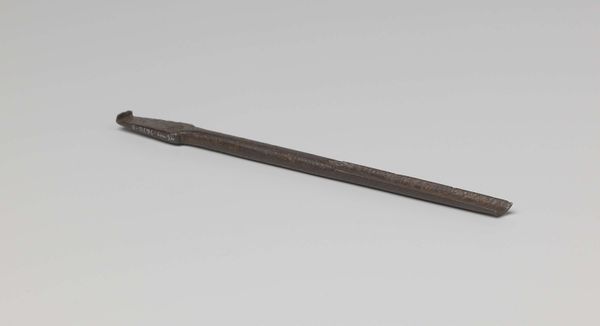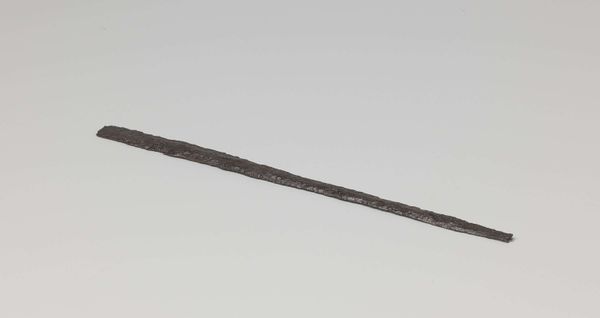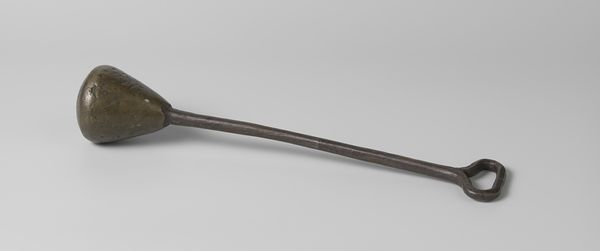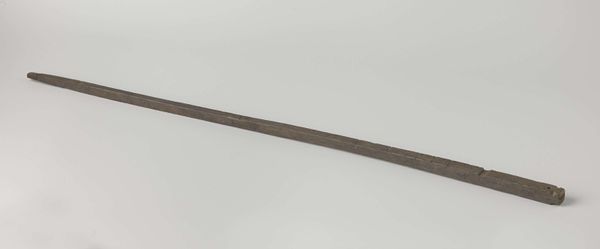
carving, metal, sculpture
#
medieval
#
carving
#
metal
#
11_renaissance
#
sculpture
Dimensions: length 64 cm, length 17.3 cm, length 49.2 cm, height 12.3 cm
Copyright: Rijks Museum: Open Domain
Curator: This sculptural object before us, titled “Tools,” dates back to around 1590-1596 and resides here at the Rijksmuseum. It’s fascinating, an anonymous creation made of metal, specifically carved. What is your first impression? Editor: Austere. The iron has an almost gothic feel; a dark relic. Its composition has a functional rigidity juxtaposed with unexpectedly ornate flourishes. Curator: That is very true! The object feels weighted down with history, a tangible connection to artisans of the Renaissance. The shape itself suggests it must belong to a contraption, some method for shaping an anvil's metal. This could have held societal value and symbolic significance during this time. The craftsmanship suggests ingenuity. Editor: Indeed! The craftsman carefully considered the flow and balance of the piece. The handle's bulbous segments provide grip, while the sharp right angles speak to mechanical force and durability. See how it’s constructed—symmetry is paramount. And those animalistic figures subtly adorning the structure? Wonderful. Curator: It shows not only the importance of tools to progress but their emotional investment, perhaps signaling skill or craft. It offers a glimpse into a world where even the mundane could be elevated to the realm of art, loaded with iconographic potential for those who could read its symbolic language. Editor: Absolutely. The object straddles utilitarianism and artistic expression; those little symbolic markers you described lend this work psychological weight far exceeding its functional purpose. Curator: A fascinating study, isn't it, of the tangible connection between function and symbolic craft, a reminder of skills almost lost to the industrial revolution? Editor: Yes. I like that the composition allows us to approach it in different ways—an object worthy of multiple interpretations and a powerful testament to material and design.
Comments
rijksmuseum about 2 years ago
⋮
Most of the implements found on Nova Zembla are carpentry and shipbuilding tools. The (surgeon’s) saw is the exception and was probably used to perform amputations.
Join the conversation
Join millions of artists and users on Artera today and experience the ultimate creative platform.
